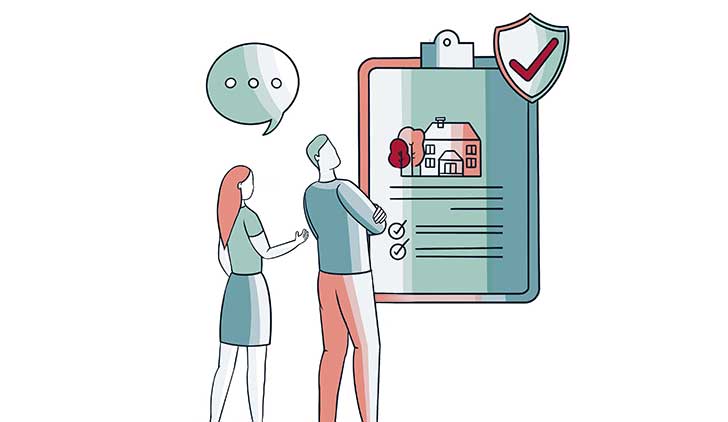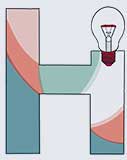Exercitation ullamco laboris nis aliquip sed conseqrure dolorn repreh deris ptate velit ecepteur duis.
Get in touch
- The Source, Global Reach, Cardiff, CF11 0SN
- [email protected]
- 02920 265265
- Monday to Friday: 8.30am to 5pm
Error: Contact form not found.
- The Source, Global Reach, Cardiff, CF11 0SN
- Support 02920 265265
Want more GI sales? It’s all about the PITCH
-
Source Insurance > LearningLab > Want more GI sales? It’s all about the PITCH

Want to increase your GI sales?
Its all about the PITCH!
If you’re new to GI, you might be finding it difficult to integrate insurance into your current sales process alongside mortgages. Which is why we’ve come up with a simple framework using our 25 years plus of experience to make sure you nail that P.I.T.C.H and convert more clients.

There are five key steps you want take to get your GI pitch perfect:

paint a picture
Before we even get started with what goes into the perfect PITCH there’s one small thing that will make a big difference to your conversion and that’s getting your PITCH in early.
Many brokers finalise the mortgage application and life protection and then ask about home insurance as an afterthought. This is too late, as the client may have already sourced it themselves. Introduce it early as part of the services you offer and you should see a rise in conversions.
By introducing it early, it also makes the conversation flow easier. When beginning the search for the right mortgage, highlight the necessity to protect their investment and possible risks of not doing so.
Prepare them for the worst
Sometimes people need to hear the “worst case scenario” to understand the need for adequate insurance. Paint a picture for your customer, “what would happen if…?”, then provide reassurance that you can provide protection for the scenario.
Don’t just focus on the big risks such as fire and flood, but also smaller instances such as escape of water, accidental damage and personal possessions. If a pipe burst above their living room and damaged their TV, a combined buildings and contents policy would not only pay for the cost of repairs but also for replacing the TV.
Make those scenarios realistic and relatable. Use your own personal story to build that connection:
“I would personally be devastated if my wife’s engagement ring wasn’t covered, which is why I insure my personal possessions away from the home too.”
Be their guide
Make it about having the right policy, not just any policy. Some clients might just want to take out a policy to please their mortgage provider. In that case, price will be the driving factor but we want to move the conversation away from this.
Use figures to support your statements, such as 1 in 5 households are underinsured, leaving them to partly cover the cost of a claim. You’ll help them avoid this situation and provide them with the right policy at the right price.
You also want to prepare them for what’s going to happen next. Let them know you’ll go through the application process with them so they don’t miss anything important and you’ll present them with a number of quotes and a recommendation.


identify their needs
Once you’ve introduced the idea of insurance to your client, the next step is to get a rich understanding of their needs.
This is where you really sell your services and earn your commission!
Price Comparison Websites can’t reach out and speak to your clients. They can’t build rapport with them and identify that they need Home Emergency Cover as they’re boiler is out of warranty and they would struggle to pay for repairs.
Get this step right and all the others will follow nicely.
Don’t be a robot
Don’t be a robot and simply go through the question set 1 by 1. Use the information you already have to pre-empt their answers.
A good broker will just go through the question set with their client and fill it out there and then.
A great broker will know most of the answers in advance by using the information they have from the mortgage application to do the basics for them. You should know whether they have any CCJs or what industry they work in, delivering a personalised experience, which isn’t available online.
Build rapport to build your pipeline
The real value comes in building rapport with your client and identifying what they really need, for instance:
- What does your client do in their leisure time? Do they like to cycle and therefore own an expensive bike? Will that need additional cover?
- Are they wearing a nice watch? Do they have an expensive collection? That will need cover too.
- What additional insurance do they have? Did gadget insurance come up during your affordability calculation?
- Did they get into gardening during the pandemic? Maybe they bought an expensive hot tub.
- Does the property require renovation or undergoing any construction?
While in the first step, we’re looking at the negatives of insurance, in this step we’re focussing on the positive and protecting what they love.

Tailor the quote
Now that you know more about what your client needs, the next step is create a tailored quote.
Help them self-assemble their products, but with you as their guide. Bring them back to the conversations you had about their lifestyle or the discoveries you made during your affordability assessment to help them come to realisation of what they need.
Valuable additions to cover are often missed by clients, such as personal possessions outside of the home, Accidental Damage or Home Emergency Cover. You can help them tailor their cover to suit their specific requirements.
Another thing to consider here is levels of excess. Is your client happy to pay out a higher excess in exchange for a lower premium? Do they understand the difference between voluntary and compulsory excess amounts?
Source’s system makes this as easy as possible, with a wide range of options from Accidental Damage to Home Emergency Cover. You can also easily add specified items with cover anyway from home.
Talk them through the quote
Once you have the quote talk them through it or if you’re sending it by email, write a quick summary of why you would recommend that product:
- Why did you add accidental damage?
- What’s so important about the trace and access levels?
- Why did you recommend a higher voluntary excess?
Not all clients will make their mind up there and then. A lot will come back later and may have forgotten what you previously discussed. The summary will prove as a useful reminder of the decision they made and also the service you provided, not just the premium.
Put the jargon into the junk folder
Insurance policies are full of very technical language and terms that can be considered jargon.
When you’re talking them through the quote, translate the insurance terms into relatable terms. Trace and access is finding the source of leaks and that could mean pulling up expensive tiling and removing shower panels.
Quick tip: You can use the Insurance Product Information Document for your recommended product as an easy guide to what’s covered and what’s not.

Quick tip: You can use the Insurance Product Information Document for your recommended product as an easy guide to what’s covered and what’s not.


Counter any objections
Sales objections are normal and insurance is an especially competitive industry. Objections are generally around price, product fit, or competitors. Your advantage is that you offer an advice service and taking out GI is a requirement of getting mortgage.
A proven and effective method for objection handling is Carew International’s LAER: The Bonding Process. LAER involves four steps — Listen, Acknowledge, Explore, and Respond.
I’ll do it myself it’ll be faster
This might come up early in the conversation. Comparison websites have made it a lot easier for consumers to get multiple quotes but they are still a long, drawn out process. Remind your client that you already have most of the information from the mortgage application and it won’t take too much longer. Also, remind them that they don’t have go through the quote again with the insurer like you do online.
Possible counters:
- I already have most the information I need to complete the quote from your mortgage application
- I can get quotes from a panel of insurers so you only need to do it once
- Once we’ve got a quote you’re happy with there’s no need to fill out the application again with the insurer
I was looking around and found a cheaper quote elsewhere
Whilst we advise not make to the conversation about price, it will often crop as a reason not to go with your option. The price you’ve quoted is guaranteed and won’t change in the next 90 days or because you’re using a different browser.
Remind them that prices on comparison sites are only indicative and can change once passed to the insurer. You can also flex your commission to make the quote more attractive if need be.
Possible counters:
- Is that a guaranteed quote from the insurer, or just what the comparison site is listing?
- If you really want to go with that quote, I’d be happy to check to see it meets your requirements.
I already have buildings insurance with my bank
Sometimes you be might working with a client who is moving home and they already have an existing policy. A lot of customers find insurance challenging and are happy just to stick with what they know.
Possible counters:
- When was the last time you checked to see if the premium is still competitive?
- Do you have what it covers? I’d be happy to compare it to the requirements we’ve identified
- There’s no obligation to take any of the quotes I present you with
But I get a free cuddly toy with this one
Who can argue with that?
You can’t convert every case but if you don’t try you won’t convert any.

Highlight your USPs
How you finish the presentation is just as important as how you start it.
You’ve built rapport with them, tailored the quote, countered their objections and now you sum all that up and make it clear what they need to do next.
You want to sum up the key aspects of the policy you’re offering, such as:
- They’ve got a range of options which have been tailored to their needs
- They all come with legal cover, lock replacement, freezer cover and trace & access as standard
- All your quotes are guaranteed for 90 days
- There are no cancellation or mid-term adjustment fees (with Source)
You also want to remind them of your services
- There’s no fees charged it’s all part of the mortgage protection service you offer
- You’re available to answer any further questions or tailor the quote further
Some final tips
Follow everything up
If you don’t do this already, follow-up every application with an email, providing their options and a summary of each product and a reminder of your service.
Practice makes perfect
Get into the habit of following these steps every time and you should soon see a noticeable difference in your GI sales.






